Local flowers and reducing plastic
October 8, 2024
While using local flowers and reducing plastic in your studio might be two goals you have as a wedding or retail florist, they may not intuitively feel related to you. The truth is that using local flowers for your arrangements can actually help you reduce the amount of plastic in your studio substantially!
I recently had a wedding in which the bride wanted a lot of blue hydrangea. I don’t generally work with a lot of hydrangea, and when I do, we are beholden to seasonality, since I typically buy domestic product only. But, this was a June wedding, and I secured a California source ahead of time so I felt good about our incoming product. Unfortunately, the box from California was delayed in shipping, and when they arrived, they were completely fried (we were having a full on heat wave here!).
Not to fear, this happens sometimes, and as a florist who regularly ships in product, I am well able to pivot quickly and I was able to secure back-up hydrangea. However, there wasn’t time to cut and ship more hydrangea from California, so I was at the mercy of our local wholesaler, which resulted in the purchase of imported hydrangea. Is this off-brand for me? Yes. While I know that until that point, I have done everything I can to adhere to my CORE Values, when we are in production week, that week’s focus is executing the design and color palette to the best of my ability. If ordering a box of imported flowers is how to do that in the eleventh hour, then that’s how we do it.
**I don’t have a problem buying imported product as an emergency backup for damaged product. At the end of the day, once a design is in place, and particularly if I went so far as to promise a certain flower, my obligation is to fulfill that promise. Creating a beautiful event is still the priority!**
Now, why did I tell you this story? The imported product I got for the wedding was absolutely lovely, and we proceeded with production and the wedding went off without a hitch. The bride never knew, because there was no reason to tell her (frankly, product substitutions happen all the time and unless they create a scope of work change, there’s no reason to create more stress for the bride several days before the wedding). She was super happy and wrote me a really wonderful review. I’m telling this story because what struck me, when the imported hydrangea arrived, was the sheer amount of plastic I was dealing with. The piles of plastic made such an impact on me that I even took pictures, in an effort to make IG stories. As someone who is used to reducing plastic in my studio and who usually has at least half my product coming straight off a local farm, I am completely unused to dealing this volume of plastic and I felt the need to document!
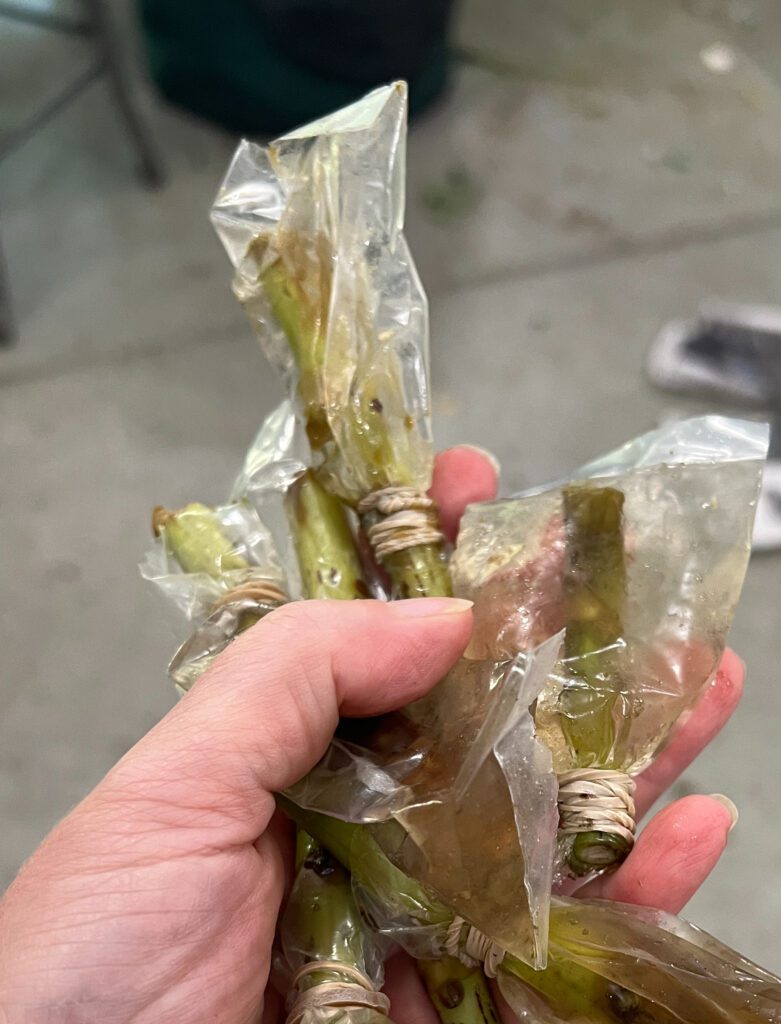
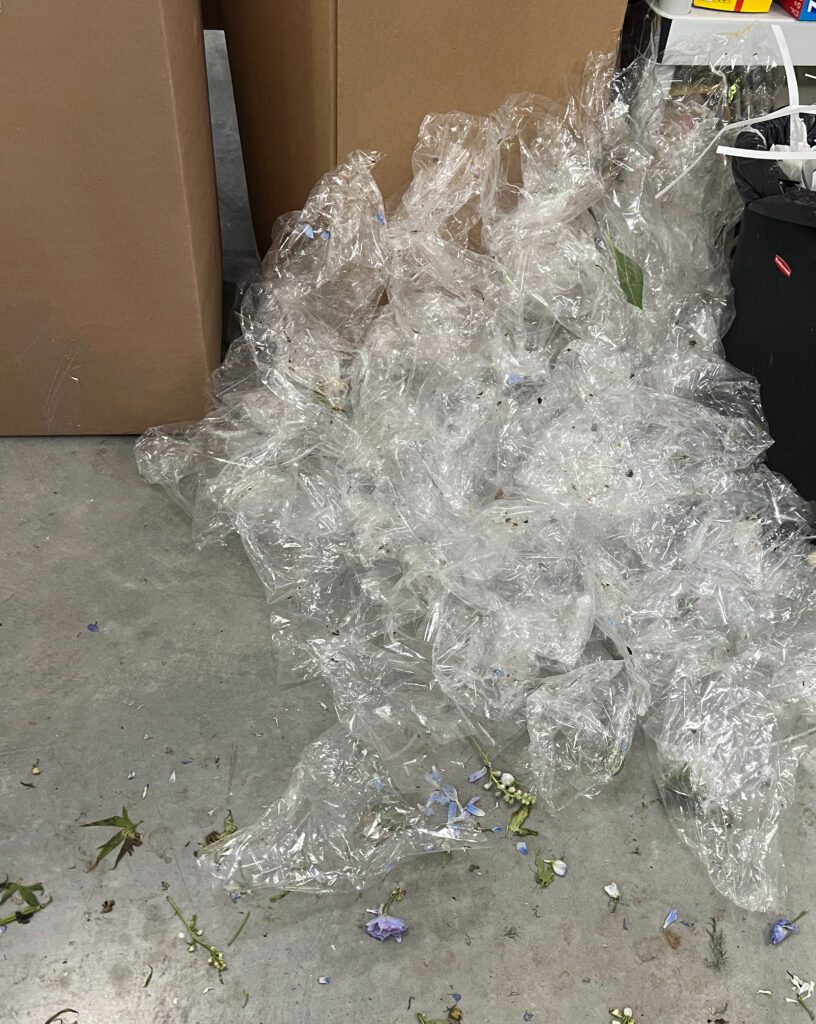
There was a plastic sleeve on EVERY SINGLE stem, as well as a little “foot” of water. And that’s just for one type of flower purchased for this wedding.
I’m not generally in the habit of photographing flowers in the box when they arrive, but, since my CA hydrangea were damaged, I did have to take photographs. Look at the difference (and try to ignore the sad flowers that is DEFINITELY not my usual blog content!).
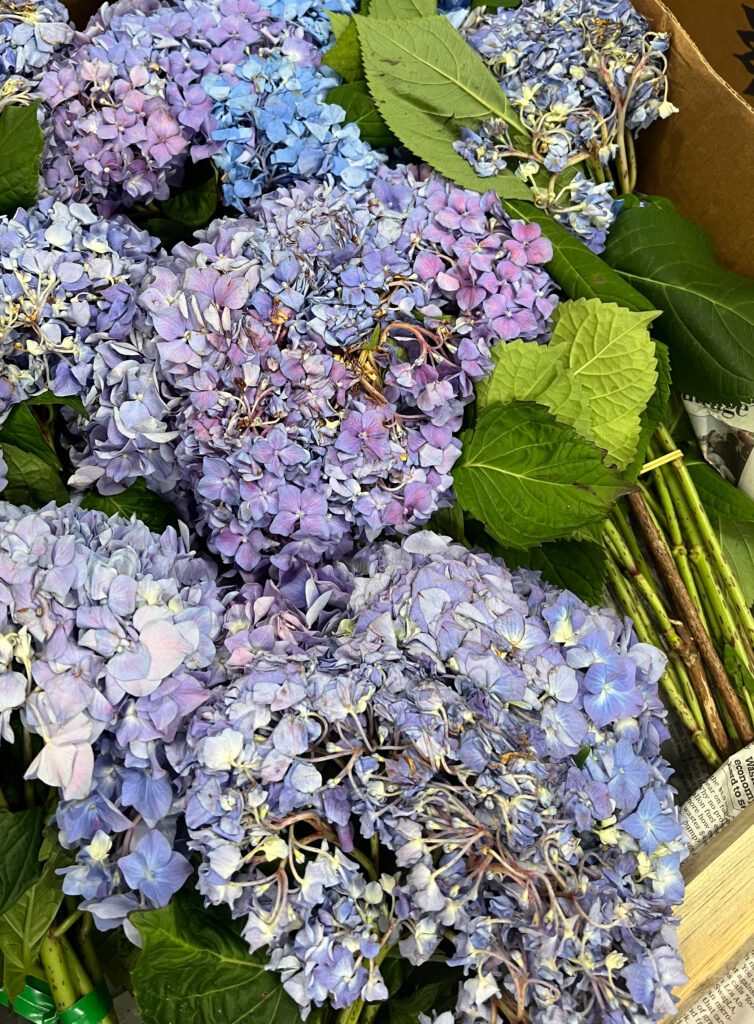
You can see that there are no plastic sleeves around the blooms (they have their own natural protection in the large leaves around the head of the bloom) and while you can’t see this part, they were not packed with the little plastic water “feet” because they were recently, so they’re super fresh.
What a lot of people don’t know is that South American hydrangea needs those little “feet” because the timeline for imported flowers is incredibly delayed. From being cut on the farm to arriving in a studio to begin being processed for designs, an imported flower is typically out of water for about TWO WEEKS! A floral designer’s job, during the week of an event, begins with rehydrating the imported stems. When you source local flowers, there is no need for rehydrating flowers, as they are delivered in water. They were likely cut only a day or two prior to that delivery. Below is an infographic from a presentation given at the Slow Flowers Summit 2023, outlining the timeline from when flowers are cut in South America to when they arrive in the US.
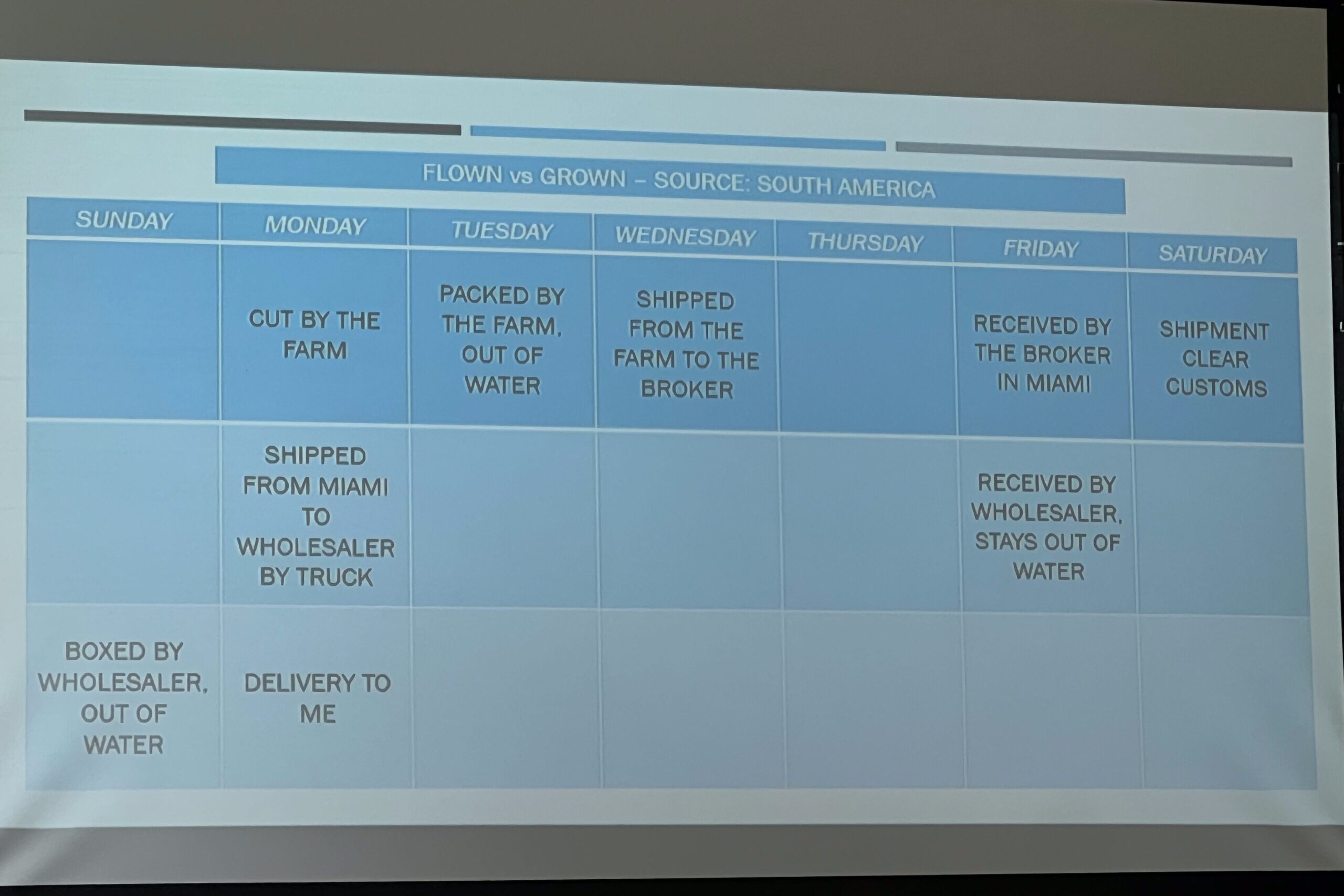
There are so many reasons to buy local flowers, but this particular instance really illustrated for me, the benefits of buying local, as it pertains to eliminating waste for your floral studio. Since Sweet Blossoms CORE Values are to be more sustainable in as many aspects of our business as possible, figuring out more ways of reducing plastic consumption is really important!
Since I never want to have a blog post that doesn’t have beautiful flowers in it, here are some of the professional pictures from this event. I love the classic look of a blue and white wedding and the cleanness of these designs, which focused more on the blooms than foliage.
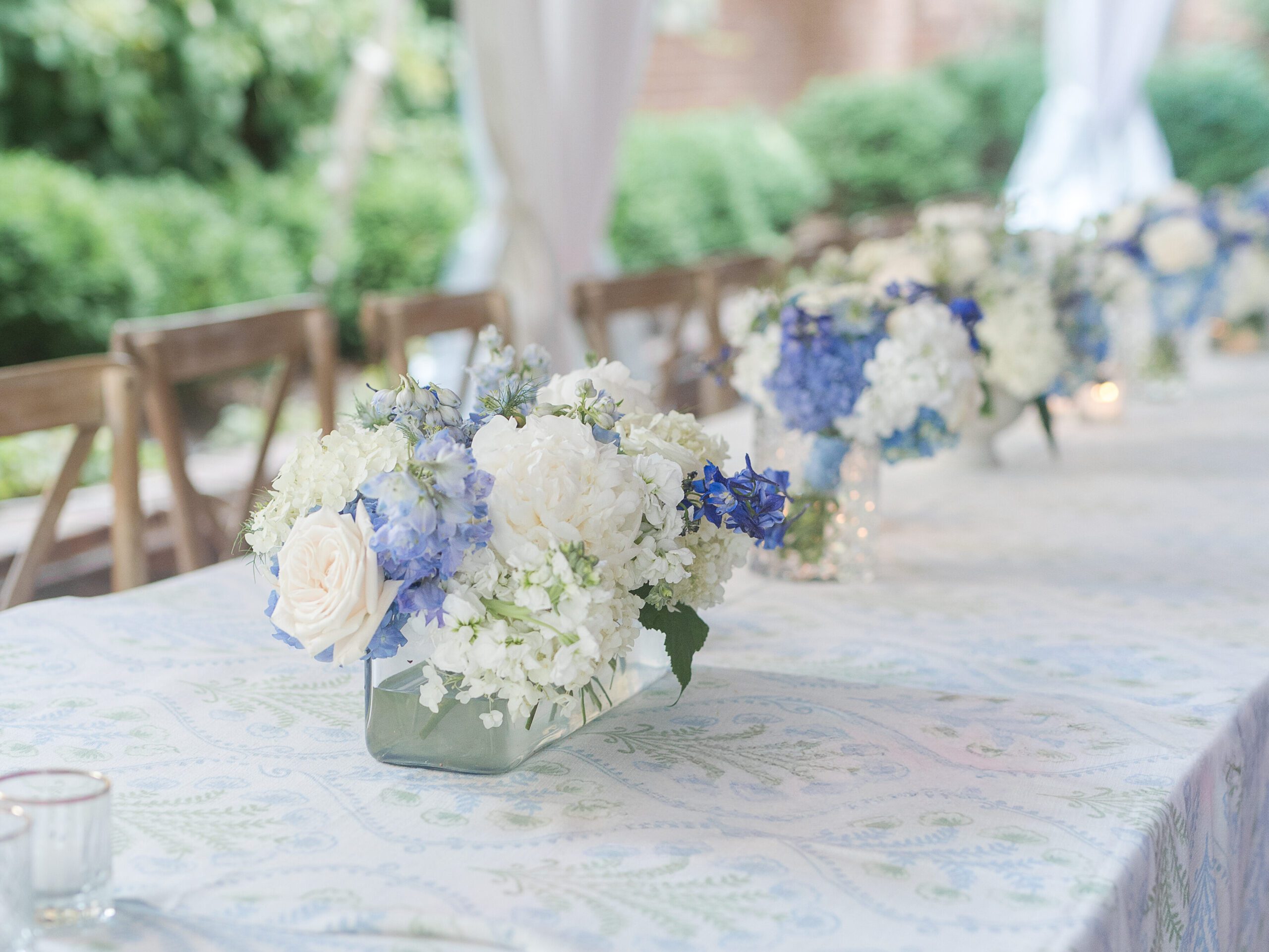
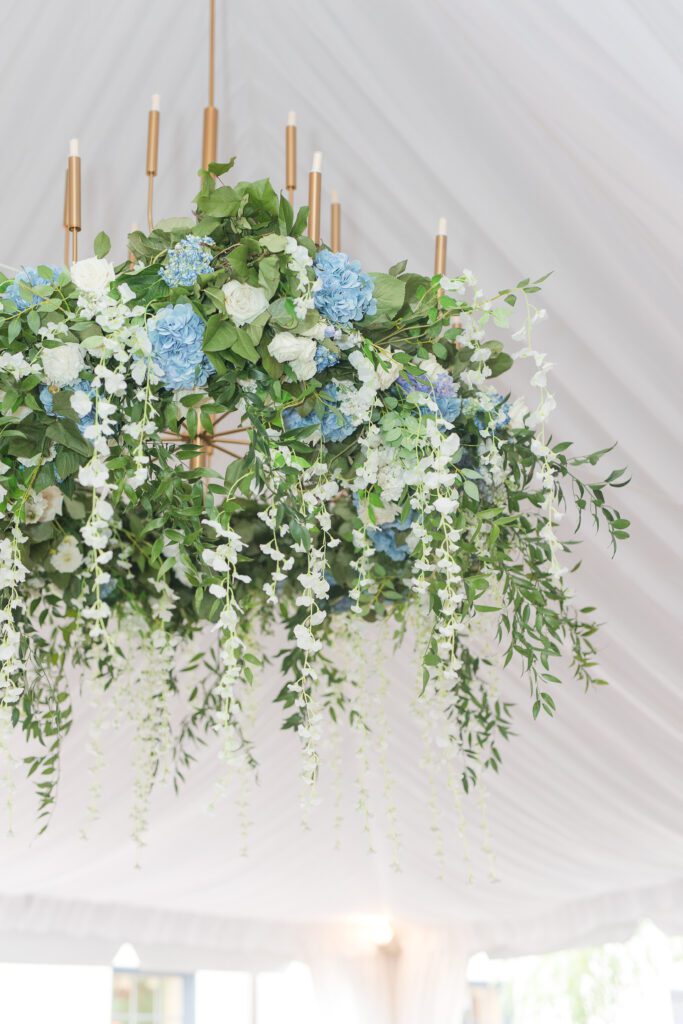
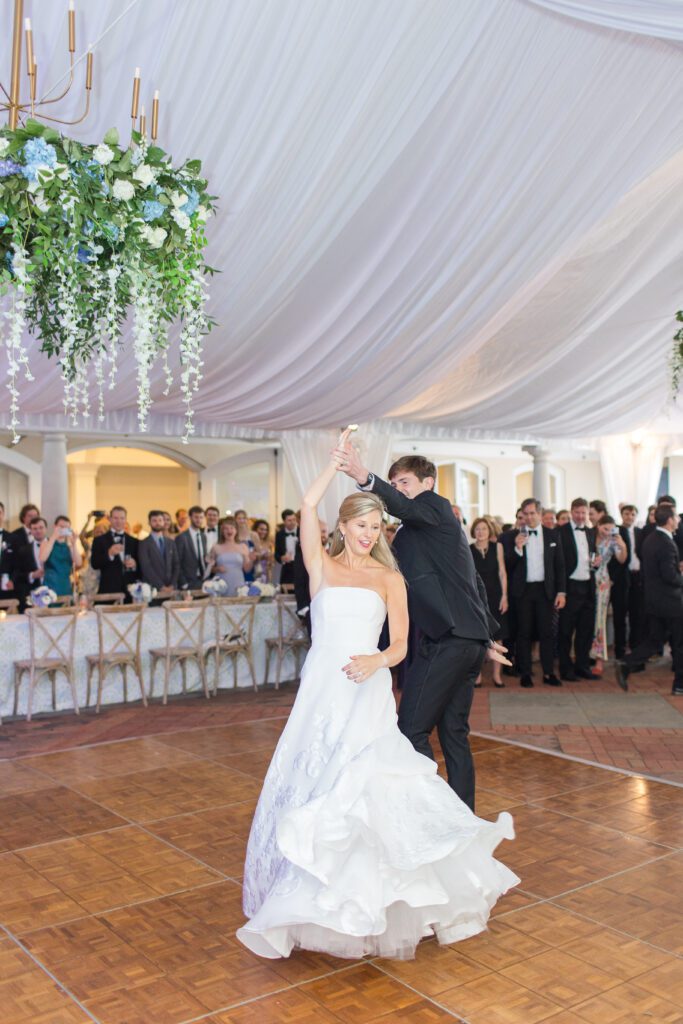
I always like to offer solutions, instead of only offering problems, so…for more information on Sustainability efforts at Sweet Blossoms, you can start here on our website!
You can also download my free video on Sustainability.
As a Thank You for making it this far, please use discount code SUST50 for 50% off of my 11 page e-book on how to make your studio more sustainable.
Professional photos: The Tuckers Photography
Studio flower/trash photos by Blair Lynn, Sweet Blossoms
Local Flowers: Mountain Flower Farm | M & M Flower Farm | Regional Farms | Central California Flower Growers Inc